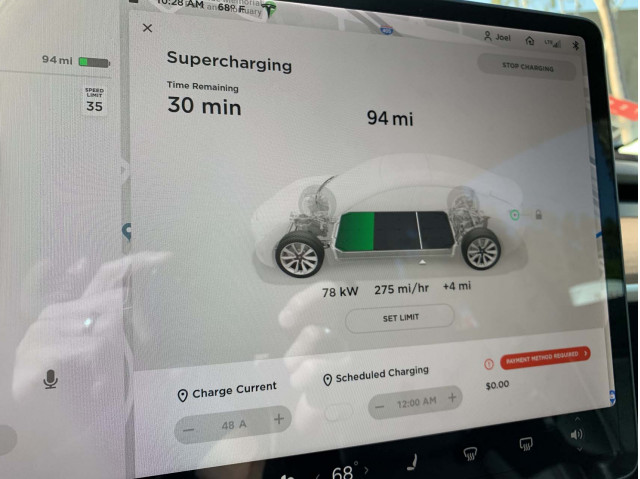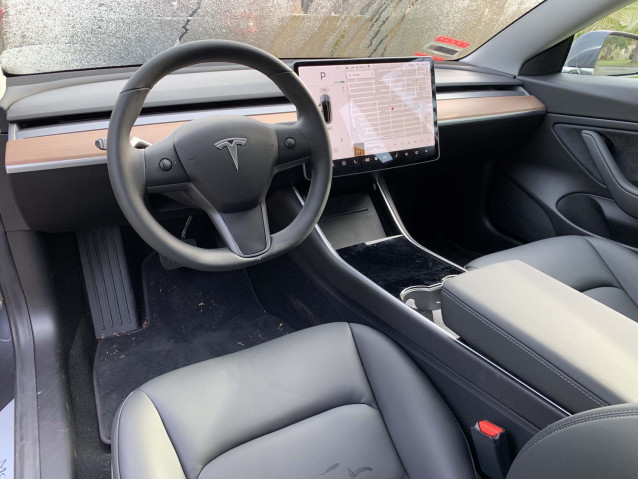2018 Tesla Model 3 first drive review: This is the future, today
It’s not a hypercar, supercar, or even a sports car, and yet it’s one of the most hyped vehicles of the last decade.
The Tesla Model 3 needs no introduction.
The linchpin in Tesla’s Master Plan, the Model 3 is supposed to be an affordable, high-volume electric car. It’s not, but it’s the future.

2018 Tesla Model 3
Normalizing the future
The flagship Model S is a truly a gorgeous car, but the Model 3 isn’t.
Step back and absorb the Model 3’s design. The rear three-quarter view is the compact car’s best angle, with a design that’s related to the larger, prettier Model S. The strong rear haunches flow into the stubby rear end, but the front, has sort of a fish face. It’s not ugly, or offensive, but it’s not pretty.
Open the door and the Model 3’s interior is spartan. The flat, thin, horizontal dashboard features a tablet-like 15-inch touchscreen, a steering wheel with two roller knobs, a turn signal stalk, and drive mode selector stalk. The interior is a shock; is it simple or just stark?
Every control for the Model 3 from the windshield wipers and headlights to the sideview mirror adjustments is controlled via the massive touchscreen, for better and worse.

2018 Tesla Model 3
Mid or Long, but no Standard
Three powertrains are currently offered in the Model 3: Mid-Range rear-wheel drive, Long Range all-wheel drive, and Performance all-wheel drive. The former has a range of 260 miles while the latter two offer 310 miles.
Base Mid-Range rear-wheel drive models have 258 horsepower and 284 pound-feet of torque while the Long-Range all-wheel drive model ups those figures to 346 hp and 376 lb-ft of torque. Buyers who opt for the Performance model will have 450 hp and 471 lb-ft of instant torque at hand.
All three models are quick, with the slowest sprinting to 60 mph in just 5.6 seconds on its way to a 125 mph top speed and the quickest dropping that to 3.3 seconds on its way to a 155 mph top speed.
Notably missing is the long-promised $35,000 Standard Range car. CEO Elon Musk promises it’s coming sometime around June 2019.
In both of my recent experiences with the Model 3 its battery management software was more consistent and efficient than that of the new Jaguar I-Pace. Its state of charge and remaining range did not change erratically and seemed in-line with the miles driven, a feat the I-Pace has consistent trouble with.

2018 Tesla Model 3
At a 120-kw Supercharger station I charged the Model 3 and added 90 miles of range in 30 minutes at an average charge rate of 65 kw. I saw a peak charge of 78 kw but was sharing the juice at the Supercharger station in Culver City, California, at a mall with eight other Teslas. The cost was $6.

2018 Tesla Model 3
A car that’s actually modern
Walk up to the Model 3 with a smartphone paired to the Tesla app and the car and it automatically unlocks, with the mirrors unfolding as a greeting. Push in on the flush-mounted door handle to pop it out and open the frameless door. No key, no fuss.
Those that don’t have a smartphone paired with the app and the car can use a plastic key card to unlock the Model 3 with a simple tap of the driver-side B-pillar. The Model 3 starts by tapping the key card on the center console ahead of the armrest.
While the seat adjustments are located on the side, like most cars, the steering wheel and sideview mirror adjustments require navigating to a menu on the touchscreen and then using the two scroll wheels on the steering wheel. It’s an interesting way to eradicate hard buttons that aren’t used frequently.
Owners, and random drivers, can create a profile in the car that saves all their settings. Most cars can do this, but the Model 3 goes further. It saves every setting and preference in the car, from radio stations and previous navigation destinations to sound settings, lighting and drivetrain preferences. It’s slick, and it’s what a modern car should be able to do.
The 15-inch touchscreen’s interface is easy to navigate and the entire menu system feels like something Apple designed for the iPhone. Menus aren’t buried or hidden and there are no fiddly knobs. It recognized multiple finger inputs at one time, and the processor kept up with fluid movements for pinch-to-zoom functions on the map. This is how a modern vehicle’s infotainment system should function.
While stationary, the layout seems perfect. In practice, it’s close but not quite.
Email This Page